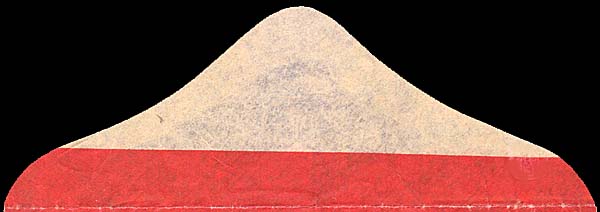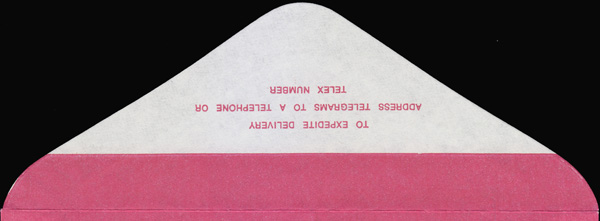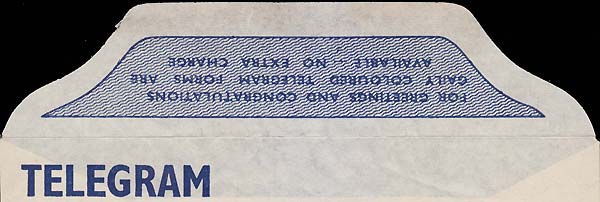Delivery envelopes - background details.
- Australia 1901-1988
- New South Wales
- Overview of NSW
- Telegraph lines
- Telegraph Offices
- Date stamps
- Forms
- Envelopes
- Instructional annotation
- Collect
- Delayed
- Free
- Immediate Urgent
- Reply paid
- Rates
- Stamps
- 1871 Telegraph stamps
- 1885 proposal
- 1893 proposal
- Queensland
- South Australia
- Tasmania
- Victoria
- Western Australia
- International
- Special aspects
Envelopes were prepared in various locations and often the finish of the envelope was more dependent on the printer than on the requirements of the order. Most distinctively, printers were able to cut the shape of the envelope into one pattern with their "knife" which produced a distinctive design on the flap.
There are eight distinctive patterns for the flaps of Australian delivery envelopes. Often two patterns are known on the same issue which simply reflects two different printers - or at least two different machines - were used to fulfil an order.
The patterns can be summarised as follows:
 Example: AE-EU-2C. |
Point: rounded. Sides: deeply curved. Height: 50 mm. |
 Example: AW-EO-14. |
Point: rounded and very wide. Sides: curved. Height: 39 mm. |
 |
Point: rounded and gradual taper. Sides: straight. Height: 33 mm. The shallowest flap of any of the delivery envelopes. |
 Example: TX 65A |
Point: rounded and wide. Sides: slight curve. Height: 51 mm. |
 Example: AW-EU-6b. |
Point: rounded and narrow. Sides: slight curve. Height: 53 mm. |
 Example: AA-EU-9Ab. |
Point: rounded and sharper. Sides: straight. Height: 53 mm. |
 Example: AE-EU-2A. |
Point: pointed. Sides: straight. Height: 49 mm but, by 1967, 46 mm.. |
 |
Point: straight. Sides: major curve. Height: 31 mm. Referred to as rectangular (although, strictly speaking, trapezoidal!!). |
 Example: AB-EU-3. |
Point: straight. Sides: straight. Height: 36 mm. Also commonly described as rectangular. |
| NOTE: sizes are given for the envelope shown. They might vary for the same shape on an envelope of a different overall size. |